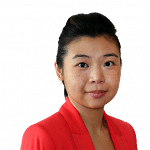The devil is in the details when it comes to creating another Silicon Valley.
Cities like Singapore which are pushing for a more innovative economy know one of the keys to success is creating the right ecosystem to attract talented individuals.
But experts say the Republic should target certain types of individuals and companies.
Mr Greg Horowitt, co-author of the book "The Rainforest: the Secret to Building the Next Silicon Valley", said there are five essential talent skill sets: producers, administrators, integrators, creators and innovators.
Singapore must look for more "creators and innovators" - those who can come up with good ideas and those who can look beyond the horizon, he said.
And within the tech industry talent can be characterised as follows: the idealists, who act out of a sense of purpose; the achievers, who act out of a sense of accomplishment; and the artists, who act out of a sense of expression.
"Singapore needs more artists and to encourage more idealists at this point," said Mr Horowitt, who is also a partner at Kai Capital Partners, an investment adviser and management firm.
This is never an "either/or situation", he said, and there is always need a combination of different skills and different personalities.
Mr Horowitt, who has visited Singapore numerous times, said he has spoken to many bright, talented individuals in local universities. What they need is to be "empowered, so they get up in the morning and truly believe the can do it and the system will support them," he said.
Experts say that to create the buzz of a tech hub, there also needs to be a critical mass of companies.
Many Singaporeans in the tech industry who The Straits Times spoke to pointed out that people often leave large companies such as Google, set up their own companies, only to be bought over by their former employers.
Thus, having large as well as small players is a feature of the ecosystem.
But Singapore doesn't just need a critical mass of companies; it also needs the right kind of companies.
And while it is easy to say these companies should be innovative, the term is often too broad to be meaningful.
Mr Barry Jarulzelski, who advises on tech and innovation strategies at consulting firm Strategy&, broke the field down to three models of innovation:
- "Need Seekers", like Apple, which use deep end-user insights to surface unarticulated needs and translate that into a new product;
- "Market Readers", like Samsung, who are quick to follow established trends in the market;
- "Tech Drivers", or the Googles of the world, that throw tech against the wall and look for what sticks.
"All three innovation strategies can be very successful," said Mr Jarulzelski, who coauthored a 2012 report The Culture of Innovation, What Makes San Francisco Bay Area Companies Different?
However, companies in the Bay Area were twice as likely to follow a "Need Seeker" innovation model, compared to the general population of companies in the US - 46 per cent versus 28 per cent, he said.
Ultimately, he said, demands of the end user must be satisfied.
"Everyone can say they are putting the customer first," said Mr Jarulzelski. "But when it comes down to resource allocation, it takes a lot of commitment... to align the innovation strategy with business strategy."

